Best Things To Do In Hanoi: What To See, Eat, And Experience In Vietnam’s Capital
Hanoi—Vietnam’s Thousand-Year-Old Capital—is a must-visit destination for both local and international travelers. With its charming blend of ancient heritage and modern vibrancy, the city offers endless experiences: from iconic landmarks and atmospheric Old Quarter streets to humble markets and irresistible street food. In this guide, Vietnam Original Travel invites you to discover Hanoi not just as a tourist, but as a true local. Let’s explore the heart of Vietnam like a real Hanoian!
Where Is Hanoi Located?
Hanoi is located in the heart of the Red River Delta in northern Vietnam, bordering several provinces, including Bac Ninh, Hung Yen, Vinh Phuc, Hoa Binh, … With an expanded area of 3,359.82 square kilometers, Hanoi ranks among the 17 largest capital cities in the world by land size. Its favorable geographic location has made it a key center for Vietnam’s economy, politics, culture, and science. Today, Hanoi is administratively divided into 12 urban districts, 1 town, and 17 rural districts
Hanoi lies in a humid subtropical climate zone, characterized by four distinct seasons: spring, summer, autumn, and winter. Summers are hot and humid with frequent rainfall, while winters are dry and chilly. Each season brings its own unique charm, making the capital city irresistibly captivating to visitors all year round.
What Makes Hanoi So Special?
Hanoi stands out among Asian capitals for its distinct character—a harmonious blend of tradition, culture, and everyday life that you won’t find anywhere else. For many visitors, a Hanoi tour is more than a trip—it’s a chance to experience a city full of soul, history, and authenticity.
A City Of Vibrant Life And Timeless Charm
From the moment you arrive, Hanoi greets you with a burst of energy—lively streets, delicious street food, deep-rooted traditions, and the warmth of its people. Whether it’s wandering through French-colonial buildings, watching locals ride motorbikes through narrow alleys, or sipping coffee at a humble sidewalk café, every corner offers a story.
The People Of Hanoi
What leaves a lasting impression on many foreign travelers is the genuine hospitality of the locals. A simple smile from a street vendor or a friendly greeting in the Old Quarter makes visitors feel welcome and at home. On weekends, the pedestrian streets around Hoan Kiem Lake come alive with folk games like tug-of-war and jump rope—inviting everyone to join in the fun.
Street Vendors: The Soul Of The Sidewalk
Hanoi’s street vendors are more than just sellers—they’re part of the city’s cultural identity. Their bamboo shoulder poles and modest carts bring fruits, snacks, and souvenirs to every corner. Despite modern malls and convenience stores, locals and tourists alike still discover comfort and nostalgia in the simplicity of street-side shopping. The beauty of these scenes also draws many foreign visitors, who often pause to capture a moment captured in time.
Rich Culture And Historic Architecture
Hanoi’s cultural depth reveals itself through its bustling Old Quarter, traditional craft streets, and the craftsmen who continue to preserve age-old trades like pottery, silverwork, and bronze casting. Visitors can explore the Temple of Literature—Vietnam’s first university—or admire French colonial landmarks like the Presidential Palace, Hanoi Opera House, Long Bien Bridge, and Hang Dau Water Tower. These architectural gems serve as symbols of Hanoi’s elegant and historic soul.
A Culinary Paradise
Hanoi’s cuisine is a feast for the senses. Its street food scene is a flavorful harmony of sour, sweet, salty, and spicy—reflecting both the energy and grace of the city. Enjoy a bowl of beef pho in the early morning, savor grilled pork with noodles (bun cha) for lunch, or grab a crispy bánh mì on the go. Don’t forget to sip on an egg coffee—a unique Hanoi creation that lasts a long time.
Modern Elegance Meets Tradition
While Hanoi honors its past, it also embraces modernity. Upscale restaurants, boutique hotels, luxury brands, and stylish cafés line its central streets, offering a cosmopolitan flair. Whether you’re into fine dining or trendy rooftop coffee shops, Hanoi balances modern comfort with cultural depth—giving visitors the best of both worlds.
How To Get To Hanoi?
Hanoi is often referred to as the heart of Vietnam, making it easily accessible from other provinces by plane, train, intercity bus, private car, or motorbike.
To get around the city, you can travel by car, motorbike, or bicycle. However, the experience becomes much more charming when you ride a cyclo through the 36 Old Streets join a three-wheeled motorbike or vintage Vespa tour. Another worthwhile option is the double-decker bus, with ticket prices ranging from 130,000 to 599,000 VND.
Must-See Attractions In Hanoi
Hanoi is a city where ancient history meets vibrant culture. From millennia-old landmarks to bustling modern streets, the capital offers a unique blend of heritage and energy. Not sure where to start? Here are the top attractions that capture the true essence of Vietnam’s heart.
Hanoi Old Quarter
Hanoi’s Old Quarter has long been a must-visit destination for anyone exploring the capital. Here, visitors can immerse themselves in the beauty of local life, ancient architecture, and the rich culture of a city with a thousand-year history. Mention the Old Quarter, and the image of “36 guild streets” filled with traditional crafts immediately comes to mind.
Dating back to the Ly–Tran dynasties, this historic urban area has existed for centuries and lies to the east of the ancient Imperial Citadel of Thang Long. Wandering through the Old Quarter, you’ll not only admire its unique old-world architecture and timeless rhythms of daily life but also find a wealth of charming handmade souvenirs and flavors deeply rooted in Hanoi’s heritage.
Hoan Kiem Lake
Hoan Kiem Lake, also known as Sword Lake, is located right in the heart of Hanoi. Surrounding the lake are iconic structures deeply rooted in Vietnamese culture, such as The Huc Bridge, Turtle Tower, and Ngoc Son Temple. A visit to Hoan Kiem Lake offers not only a relaxing walk and a breath of fresh air, but also the chance to explore the nearby Old Quarter for photo opportunities and local delicacies. Especially on weekends, the area transforms into a lively pedestrian zone filled with bustling crowds. It’s the perfect time to immerse yourself in the local vibe, enjoy recreational activities, and catch captivating performances.
The Temple Of Literature And Vietnam’s First University
The Temple of Literature (Van Mieu–Quoc Tu Giam) is a historic complex that once housed Vietnam’s very first university. It was built during the reign of King Ly Thanh Tong around the year 1070. Located to the south of the Imperial Citadel of Thang Long, this site is a popular destination for students in Hanoi, who often visit to pray for good luck in their academic pursuits. If you’re eager to learn about the thousand-year-old cultural heritage of Dai Viet and admire the distinct architectural style of the early Nguyen Dynasty, this iconic Hanoi landmark is not to be missed.
Ho Chi Minh Mausoleum
The Ho Chi Minh Mausoleum stands at the center of the vast Ba Dinh Square. This is where President Ho Chi Minh read the Declaration of Independence and is also where he now rests in peace. The mausoleum is a significant historical site and a must-visit stop on any one-day Hanoi tour. According to many travelers’ Hanoi experiences, if you visit the mausoleum, don’t miss the flag-raising ceremony at 6:00 AM and the flag-lowering ceremony at 9:00 PM. As the loudspeakers announce the upcoming ceremony, a solemn atmosphere fills the square. People line up respectfully, watching the honor guards lower the national flag with great reverence and pride.
Hoa Lo Prison Museum
Hoa Lo Prison is an important historical site in Hanoi, Vietnam. It was a former prison built by the French in the 19th century and was used to detain political prisoners. What makes Hoa Lo Prison special is its preservation of many significant historical and cultural relics, offering visitors a deeper understanding of Vietnam’s struggle for independence.
St. Joseph’s Cathedral
Hanoians take pride in St. Joseph’s Cathedral, a centuries-old landmark. Not only is it a place of worship for local Catholics, but it’s also a popular sightseeing and check-in spot for both domestic and international tourists. Built by the French in the Gothic architectural style, the cathedral was inspired by the design of Notre-Dame de Paris. With its stunning backdrop, a visit here guarantees some “Instagram-worthy” photos that are sure to rack up the likes.
Tran Quoc Pagoda
Tran Quoc Pagoda is ranked among the top 10 most beautiful pagodas in the world. With a history stretching back 1,500 years, it is the oldest pagoda in Thang Long – Hanoi. Located on the banks of West Lake, Tran Quoc Pagoda offers a harmonious blend of ancient, majestic architecture and serene natural surroundings. Beyond its architectural beauty, the pagoda captivates visitors with its tranquil, peaceful atmosphere—a perfect place to find inner calm and spiritual serenity.
Vietnam Museum Of Ethnology
The Vietnam Museum of Ethnology—established in 1981 in Hanoi—is described as a vivid portrait of the culture and history of Vietnam’s 54 ethnic groups. Here, visitors can see firsthand centuries-old artifacts such as weapons, costumes, musical instruments, and traditional clothing. The museum also offers fascinating insights into the spiritual life of ancient Vietnamese people, allowing guests to better understand the unique cultural identity of each ethnic group.
Long Bien Bridge
Long Bien Bridge stretches across the Red River, connecting Hoan Kiem District with Long Bien District. Built in 1898, it has stood as a silent witness to the many ups and downs in Vietnam’s history. This historic bridge is a cultural, historical, and architectural symbol of the capital. Visitors not only come to admire its aged, classical structure but also to capture stunning check-in photos at its many picturesque angles.
Vietnamese Women’s Museum
The Vietnamese Women’s Museum is located on one of the most beautiful streets in Hanoi. It is a must-visit destination for those who want to learn about the role and significance of Vietnamese women throughout the cultural and historical journey of the country.
The museum houses valuable documents and artifacts that highlight the stories of women from all regions of Vietnam. The exhibits are thoughtfully and impressively curated. They reflect the deep contributions and silent sacrifices made by Vietnamese women in the past, present, and future.
Bach Ma Temple
Bach Ma Temple is located on Hang Buom Street and is one of the Four Sacred Temples of Thang Long, which were built to guard the ancient capital. The temple was originally constructed in the 9th century to worship Long Do, the guardian deity of the eastern gate of the citadel. Featuring traditional architecture with strong influences from the Le and Nguyen dynasties, along with ancient horizontal lacquered boards, parallel sentences, and precious worship statues, the temple is not only a sacred site for Hanoians but also a fascinating cultural and spiritual stop for travelers exploring the heart of the capital.
The Ancient House At 87 Ma May Street
Located in the heart of the Old Quarter, the Ancient House at 87 Ma May Street is a well-preserved example of traditional Hanoi architecture from the late 19th century. This two-story house showcases the typical design of old merchant homes, with a narrow facade, inner courtyards, wooden beams, and tiled roofs. Walking through its rooms, visitors can get a glimpse into the daily life, cultural practices, and craftsmanship of Hanoians in the past. Today, the house serves as both a heritage site and a peaceful stop for those seeking to explore the rich architectural and historical layers of the capital.
Hanoi Train Street
Hanoi Train Street is one of the city’s most unique and Instagram-famous attractions, tucked away between rows of tightly packed houses in the Old Quarter. Here, a railway track runs just inches away from doorsteps, creating a surreal and thrilling scene when the train passes through. Despite its narrowness, the street is alive with local cafés, curious travelers, and the everyday rhythm of life.
Vietnamese Cooking Class
Joining a Vietnamese cooking class in Hanoi is a flavorful journey into the heart of the country’s culinary culture. These hands-on experiences usually begin with a guided market tour, where you’ll explore vibrant local stalls and learn about essential ingredients. Then, under the guidance of skilled chefs, you’ll prepare traditional dishes such as pho, nem ran (spring rolls), or bun cha. It’s not just about cooking—it’s about connecting with Vietnamese heritage, flavors, and warm hospitality in an unforgettable way.
Water Puppet Show
Watching a water puppet show in Hanoi is a must-do cultural experience that brings Vietnamese folklore to life. Performed on a water stage with wooden puppets controlled by skilled puppeteers behind the curtain, the show features lively scenes of rural life, legends, and folk tales accompanied by traditional music. Originating from the Red River Delta, this unique art form captivates both locals and visitors with its charm, humor, and rich cultural significance.
What To Do In Hanoi At Night?
As the sun sets, Hanoi transforms into a vibrant, energetic city where tradition and modern life blend seamlessly. Whether you’re a culture lover, foodie, or just seeking a unique evening vibe, the capital offers countless ways to enjoy its magical nights.
Night Markets
Night markets like Dong Xuan and Quang Ba come alive after dark with colorful stalls, sizzling street food, and a lively crowd. It’s the perfect place to experience Hanoi’s nightlife while hunting for souvenirs or tasting local snacks.
Thang Long Imperial Citadel (Night Visit)
The citadel opens its gates for special evening tours, offering a rare chance to explore ancient architecture under soft lighting and peaceful silence. The illuminated relics bring a mystical, almost cinematic charm to the historic site.
Egg Coffee Experience
Sipping egg coffee at night adds warmth to Hanoi’s cool evening breeze. Cozy cafés along Hoan Kiem Lake or in hidden alleys offer a relaxing space to enjoy this signature drink when the city slows down.
Pedestrian Streets
Every weekend evening, streets around Hoan Kiem Lake become car-free zones filled with music, street performances, and couples on strolls. The vibrant atmosphere here makes it one of Hanoi’s most popular night hangouts.
Hoa Lo Prison By Night
The night tour of Hoa Lo Prison is both haunting and powerful. Enhanced by sound and light effects, it offers a deeper emotional experience and reflection on Vietnam’s struggle for independence.
Temple Of Literature By Night
At night, the Temple of Literature glows with poetic lighting that enhances its tranquil beauty. Special evening visits often include music or art installations, giving this ancient space a modern, magical twist.
Motorbike Tours
Hopping on a motorbike tour at night lets you weave through Hanoi’s buzzing streets like a local. The cool air and neon-lit alleys give you a fresh perspective on both famous and hidden parts of the city.
Jeep Tours
Cruising around Hanoi in an open-air military jeep at night is a fun and nostalgic way to see the sights. With fewer crowds and a refreshing breeze, landmarks like the Opera House and Long Bien Bridge shine even brighter.
Street Food Discovery
Hanoi’s street food scene truly comes alive after dark. From sizzling bánh xèo to bowls of phở steaming under dim yellow lights, the night adds flavor and adventure to every bite.
Souvenir Shopping
Many souvenir shops stay open late in the Old Quarter, offering everything from hand-embroidered textiles to quirky gifts. Shopping at night feels more relaxed and gives you time to chat with local artisans.
What To Eat In Hanoi?
Hanoi’s cuisine masterfully blends sour, spicy, salty, and sweet flavors—reflecting the very essence of this thousand-year-old capital: vibrant, contemplative, captivating, and full of charm. You can easily savor Hanoi’s specialties at sidewalk eateries or from humble street vendors
Pho
No visit to Hanoi is complete without trying pho—Vietnam’s world-famous noodle soup. Best enjoyed in the early morning or cool evening, its rich broth, tender beef or chicken, and fresh herbs make it the city’s ultimate comfort food.
Bun Cha
Grilled pork patties and slices served in a tangy broth with rice noodles and fresh greens. This lunchtime specialty became globally famous after Obama’s visit and is best savored at roadside eateries with smoky grills.
Bun Dau Mam Tom
A beloved Hanoian dish, bun dau mam tom combines fresh rice vermicelli, crispy fried tofu, and various pork cuts, served with aromatic herbs and fermented shrimp paste. The intense, umami-rich dipping sauce is what makes this street food staple both challenging and unforgettable.
Bun Oc
Bun oc is a traditional snail noodle soup with a tangy tomato-based broth, topped with chewy snails, tofu, and fragrant herbs. Often enjoyed as a breakfast dish, it delivers a unique balance of sour, spicy, and savory flavors that captures Hanoi’s culinary charm.
Cha Ca La Vong
This iconic Hanoi dish features turmeric-marinated fish pan-fried with dill and spring onions, served with vermicelli and peanuts. Traditionally cooked at the table, it’s a sensory experience of sizzling sounds and herby aromas.
Trang Tien Ice Cream
A nostalgic sweet treat, this chewy, creamy ice cream has been a local favorite since 1958. Grab a stick and enjoy it while strolling around Hoan Kiem Lake, just like generations of Hanoians have.
Green Rice From Vong Village
Soft green rice flakes made from young sticky rice, green rice (com) is Hanoi’s most poetic seasonal snack. Often wrapped in lotus leaves, it’s a symbol of autumn and a beloved gift of love and tradition.
Indochina Dragonplum
These tart green drupes are unique to Hanoi and show up in everything from cooling drinks to tangy stews. Whether pickled or candied, indochina dragonplum adds a nostalgic bite to local meals.
Banh Mi
Crispy on the outside, soft on the inside—Hanoi’s banh mi offers a quick yet flavorful meal. Filled with grilled meats, pâté, herbs, and pickles, it’s the perfect fusion of French technique and Vietnamese flair.
Egg Coffee
Creamy, frothy, and unforgettable, egg coffee is a Hanoi-born invention. Made with whipped egg yolk and robusta coffee, it’s best sipped slowly in a quiet café overlooking the Old Quarter.
Where To Stay In Hanoi?
Hanoi offers a wide range of accommodations for travelers, from budget guesthouses and cozy homestays to hotels and luxury resorts—catering to various preferences and budgets. If you’re exploring the Old Quarter, options range from backpacker-style dorm beds at around 100,000 VND per night to high-end hotels priced between 3,000,000 and 5,000,000 VND per night.
Some standout hotels include the Sofitel Legend Metropole Hanoi, known for its French colonial architecture; the Hilton Hanoi Opera, just steps from the Opera House; and Apricot Hotel overlooking Hoan Kiem Lake. For stunning West Lake views, Sheraton Hanoi and InterContinental Hanoi Westlake are top choices, while Lotte Hotel Hanoi offers panoramic city views from the upper floors of the 65-story Lotte Center.
When Is The Best Time To Visit Hanoi?
The answer to the question “When is the best time to visit Hanoi?” depends on each traveler’s preferences. However, for many tourists—and even a large number of locals—autumn is considered the most beautiful season in Hanoi. From August to October, the rainy season has ended, giving way to dry weather with gentle sunlight. These pleasant conditions make it ideal for exploring all areas of Hanoi, including outdoor attractions and street food spots.
If you visit Hanoi in winter (from November to January), you’ll get to experience the distinct chilly weather typical of northern Vietnam. It’s also a festive time, filled with holiday celebrations across the city. That joyful atmosphere is a special reward for winter travelers. Plus, Hanoi’s rich food scene—with plenty of warm and hearty specialties—is perfect for enjoying during the colder days.
How Many Days Should You Spend In Hanoi?
The ideal length of your stay in Hanoi depends on what you want to experience. Here are a few common travel styles to help you decide:
1–2 Days: For a Quick Cultural Introduction
Perfect for travelers on a tight schedule or a quick stop before heading to Ha Long Bay or Sapa. In this short visit, you can:
Stroll through the Old Quarter
Visit the Ho Chi Minh Mausoleum
Try a street food tour
Enjoy a traditional water puppet show
3–4 Days: For a Deeper Exploration
This is the sweet spot for most travelers. It gives you time to:
Visit major attractions like the Temple of Literature, Hoa Lo Prison, and Ethnology Museum
Explore West Lake and the French Quarter
Take a cooking class or a countryside bicycle tour
Enjoy the vibrant night markets and local cafés
5–7 Days: For Slow Travel and Nearby Getaways
Ideal for travelers who want to soak in the local lifestyle and explore the surroundings. You can:
Discover hidden alleys, pagodas, and craft villages
Take day trips to Bat Trang pottery village, Duong Lam ancient village, or Ninh Binh
Relax and observe daily life unfold in the city’s parks, lakes, and cafés
No matter how long you stay, Hanoi offers a rich blend of culture, history, food, and warmth that’s hard to forget.
Wrap-Up: Why Hanoi Deserves A Spot On Your Travel List
Thousand-year-old Hanoi, with its blend of ancient charm and modern vibrancy, has always been a captivating destination for travelers. We hope that the detailed A–Z guide above has given you helpful insights for a fulfilling and memorable trip to Hanoi.
>>> Ta Hien Beer Street Hanoi: Best Travel Giude
>>> Top Best Things to in Hanoi Old Quarter at Night
Send us your comments about : Best Things To Do In Hanoi: What To See, Eat, And Experience In Vietnam’s Capital
Required fields *
You might also be interested
Travel ideas
Need some inspiration? Discover some of the best tours in Vietnam, which are highly appreciated by our clients. An excellent starting point to help you choose the right trip to Vietnam, Laos, Cambodia, Burma or Thailand, whether you are traveling alone, as a couple, as a family or with friends.
And because this trip is yours, feel free to customize it as you wish!
Vietnam Cambodia Itinerary 14 Days
Hanoi – Hoa Binh – Mai Chau – Ninh Binh – Halong bay – Hue - Danang – Hoian – Saigon – Ben Tre - Can Tho – Saigon - Siem Reap Angkor - Tonlé Sap - Siem Reap – Ta Prohm - Departure
Vietnam 14 Day Itinerary
Vietnam 14-day itinerary covers the country’s top highlights and quintessential experiences for an unforgettable journey.
Honeymoon Tour Pakcages In Vietnam 12 Days
Saigon Arrival - City Tour – Mekong Delta – Danang – Hoian - by flight - Da Nang – Hanoi - by flight – Halong - overnight on junk – Departure
Authentic Hoang Su Phi Trekking Tours
Hoang Su Phi trekking tours take you to stunning terraces, meet few tourists, connect with locals and enjoy authentic culture.
Best Nha Trang Beach Tour 4 Days
Saigon/Hanoi – Nha Trang relaxation – Saigon/Hanoi – Departure
Mekong Delta Bike Tour Itinerary 7 Days
Cycle through the Mekong Delta in 7 days, discovering floating markets, orchards, craft villages, and tranquil green islands.
Are you interested in this tour?








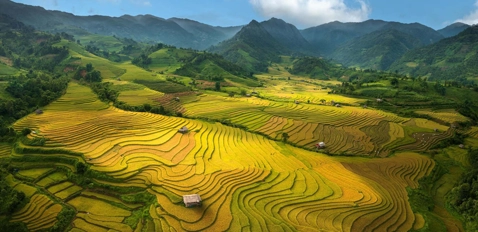






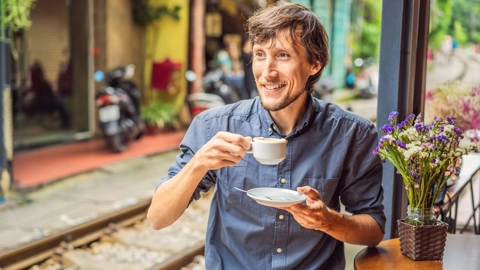
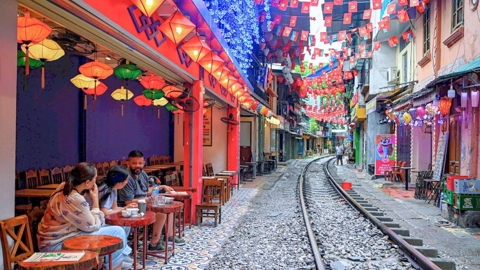
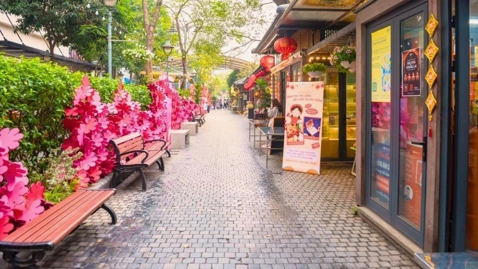
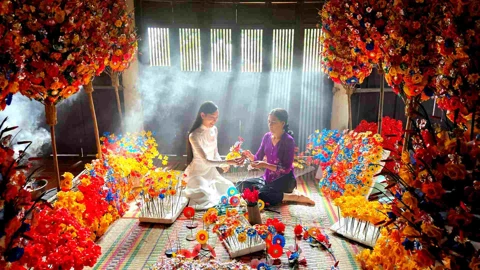


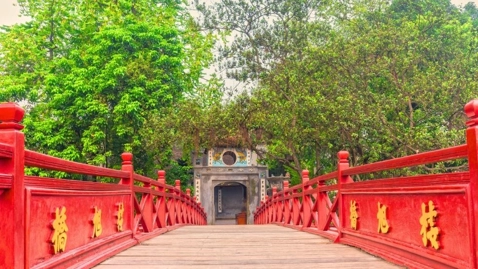
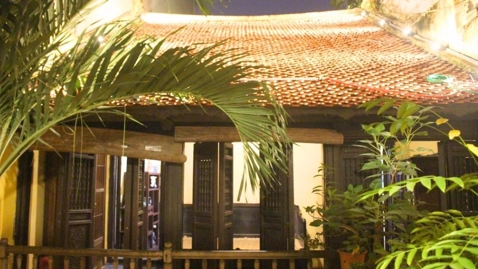















Comment